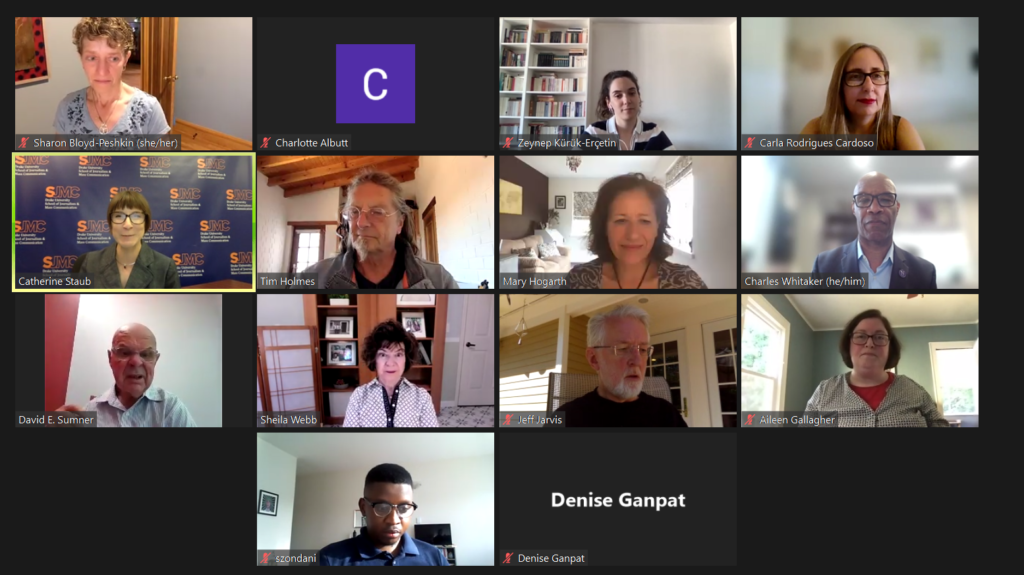by Mary Hogarth and Charlotte Albutt

MAGAZINE experts and academics from across the globe reunited over their laptop screens for the much anticipated Mapping the Magazine 7 hosted by Drake University.
“This is where old friends meet,” said conference founder Tim Holmes acknowledging the chorus of hellos and the how have you been.
This year’s host, Dr Catherine Staub, dean of the SJMC faculty at Drake University, welcomed the audience before introducing our keynote speaker, Professor Charles Whitaker, dean of Northwestern University’s Medill School of Journalism.
Professor Whitaker discussed overcoming the existential crisis of the modern magazine, exploring the changing definition of magazines in our growing digital age. He addressed how consumers can confuse online platforms for the magazine brand, leading him to re-evaluate his definition of a magazine.
“My new definition of a magazine is a magazine consists of curated and highly identifiable content, distributed on multiple platforms to an audience that is attracted to the ‘branded’ messaging.”
Professor Whitaker
His keynote set the scene for the first panel, magazines and history, with presentations which explored how magazines have framed historical events.
Dr Kevin Lerner, Assistant Professor of Communication/Journalism at Marist College, examined the merit of The New York Times devoting entire issues to prominent stories. His presentation was followed by Professor David Sumner of Ball State University, who spoke about the expansion of interest and popularization of content in American magazines within the 20th Century.
The panel culminated with a talk from Assistant Professor Sonia Lamy and Dr Carla Rodrigues Cardsos, who discussed the JMK’s case in paper and digital Portuguese news magazines.
Magazine and readers
“Magazines focus on building communities, but to survive, it needs its readers,” said panel moderator Dr Carla Rodrigues Cardsos, course director at Lusófana University.
Mary Hogarth from Bournemouth University explored how Country Walking Magazine is thriving post-pandemic, having built a ‘community’ of nearly 40,000 print and digital subscribers. One point she made reinforced that “print isn’t dead. Magazines just need to get the model right”.
Talita Magnolo, from Universidade Federal de Juiz de Fora, Brazil, discussed The magazine Intervalo: 1964 commemorative edition and the strengthening of the relationship.
Her presentation was followed by Dr Jennie Watts, AUT New Zealand, who explored Expression of profession: an analysis of testimonials endorsing Architecture NZ magazine in a crisis, further delving into the relationship between readers and magazines.
Emerging trends and steadfast practices
The final panel began with a talk from Aileen Gallagher, Syracuse University and Professor Sharon Bloyd-Peshkin, from Columbia College. They shared their research which assessed 41 videos to answer the question: is branded content embracing solutions journalism?
Then the topic turned to fashion with Associate Professor Rebecca Johinke, Sydney University exploring Consumption and the convergence of reading and shopping: Net-a-Porter’s Porter magazine as an augmented delivery technology.
The panel ended with Simphiwe Mpho Zondani, Varsity College, South Africa, exploring the effects of covid-19 on the magazine industry. His presentation, Beyond narratives of precarity and closure: Mapping new lines of flight for the South African magazine, examined the impact of COVID-19 on South African magazines.

